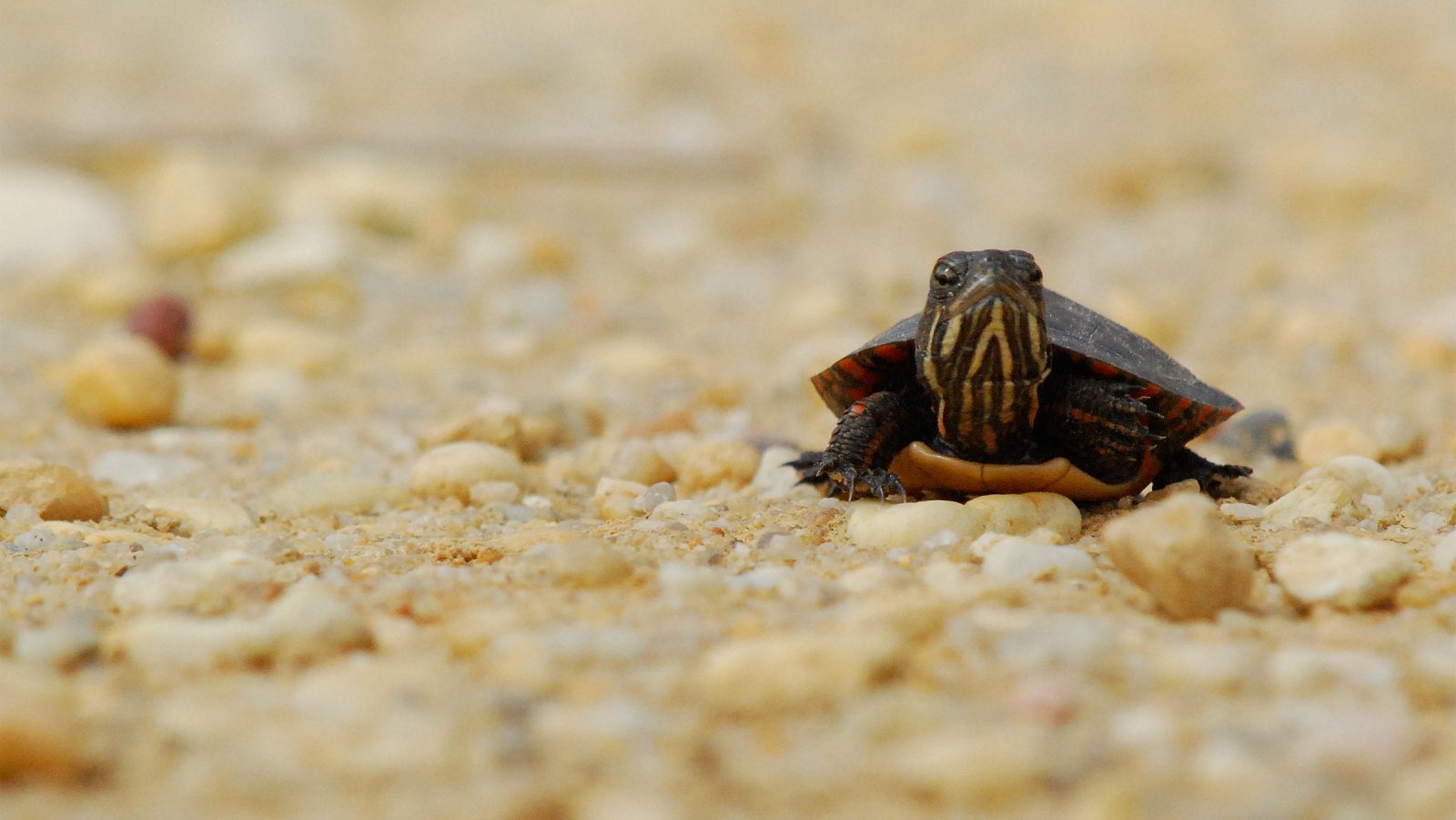Climate change, like all things in life, consists of some stuff we are relatively certain about, like the fact that the last decade was the hottest on record, and other stuff that we are still discovering, like the influence of the melted Arctic on weather in the Northern Hemisphere.
As a scientist, it’s my job to try and expand our collective understanding of how the world works. To accomplish this lofty goal, I conducted a study of 46 female painted turtles.
I chose such a mundane animal because of one specific aspect of its biology: temperature-dependent sex determination, or TSD. When TSD eggs develop in cool temperatures, they become the “cooler” sex — that is, male — while higher temperatures lead to the “warmer” female sex.
With that in mind, I wondered: Would painted turtles, who depend on a stable mix of warm and cold weather for a stable mix of male and females, find a way to adapt to these warmer temperatures?
For this experiment, I observed 46 female painted turtles constructing their nests along the Mississippi River. I carefully changed the depth of each nest to test the hypothesis that deeper nests would be cooler and therefore would produce more males. I also placed a temperature logger in with the eggs, which recorded the temperature in the nest every hour for the full three months it takes for painted turtle eggs to hatch. This provided a detailed and reliable record of nest temperature during the development of the turtles.
By the end of my time waiting for the eggs to develop, normal scientific curiosity had grown to include attachment to these little turtles. Unlike their mother who lays the eggs and abandons the nest, I eagerly awaited the time when I could finally check in on my subjects. I couldn’t wait to see how things turned out for the 46 little turtle families.
When I returned to count the baby turtles in the fall, instead of baby turtles scampering around, in half of the nests I found only rotten eggs. A few weeks after the nests were constructed, the Mississippi River had flooded.
Even when protected by their eggshells, safely hidden in their nests, turtles need oxygen. When submerged by the floodwaters, the baby turtles drowned.
Climate change is predicted to increase the number of floods, because as air warms, it can hold more moisture before raining. This means heavier rainfall events, which means more flooding. So it looks like my study on the effects of climate change on turtles had been affected by a different effect of climate change.
Thankfully, even though half of my experimental nests had been destroyed, I was still able to learn something. My data showed that the deeper nests were not actually cooler than the shallower nests and instead produced the same number of males and females as the shallow nests. This means that digging deeper nests is probably not a way for turtles to construct cooler nests to counteract climate change.
But perhaps there are other ways of constructing cooler nests? In fact, in a different experiment I found that painted turtles nest in shadier locations in a warmer climate, so this provides some hope for how reptiles with TSD might respond to climate change.
My research has investigated one way in which reptiles might respond to climate change, but it speaks to a larger issue. Just like the painted turtles, while humanity fortifies and adapts its own nests for the coming effects of climate change, we will be hit with the unpredictable events that climate change makes more likely.
Because when a study on a potential climate impact is impacted by a potential climate impact, it quickly becomes apparent that this stuff is complicated. The only way to reduce the complications we are going to have to endure is to reduce CO2 emissions.
Fortunately, from energy efficiency to renewable energy to gas mileage standards, humans have started making the first steps down the path towards a low-carbon future. These policies are a start, but work remains to be done.
Ignore that responsibility, and it could be our own nests we find flooded.



